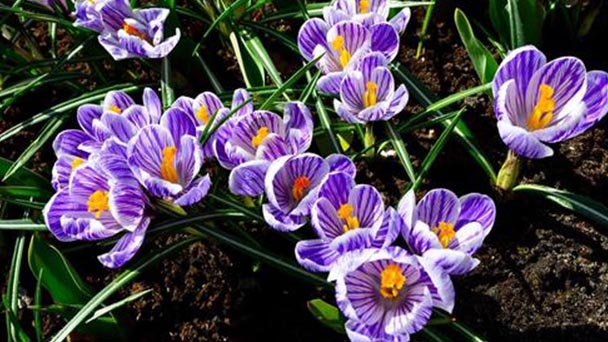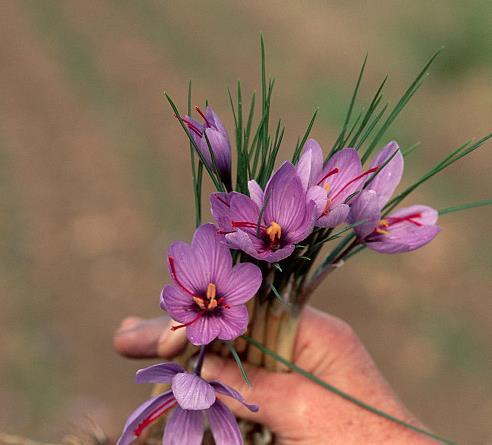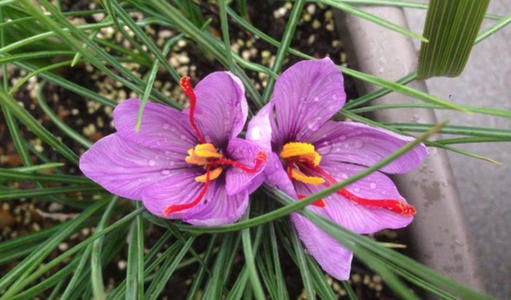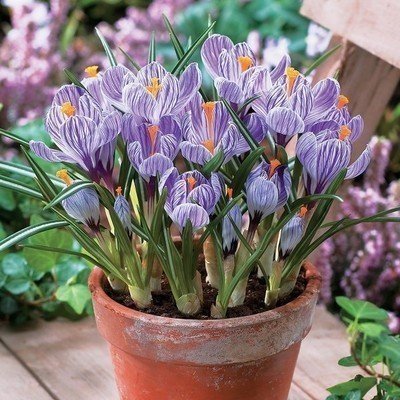How to grow and care for Crocus sativus
Written by Maggie
Oct 30 2021

Crocus sativus is a very old and precious plant, highly appreciated, because of its sweet smell, and is often made into spices. Its stigma is a famous Chinese medicine. Many people start growing it for its high values. How to grow and care for Crocus sativus? Let's look together.

How to grow Crocus sativus
Choice of planting site. We should choose high - dry terrain, good drainage, fertile land. Before planting, the land should be ploughed, and applied into rotten barnyard manure or cake manure and a small amount of superphosphate, till the land rakes fine high furrow.
Planting time. Generally from late August to early September is appropriate, but not later than late September. Early planting should be preferred during this period, which is conducive to the vigorous growth of plants. Cultivation method: The big ball can be planted with caves and the small ball can be planted with furrows. The spacing and depth of the plants were determined by the size of the bulbs.
Water and fertilizer management. After planting, the soil should be kept moist to facilitate rooting. After seedling, because there are many small buds on the bulb, some parts can be removed and strong small buds can be retained. During the growth period, pay attention to weeds and loose soil, watering, fertilization, and in the rainy season, prevent water. In the pregnant bud period, we should add 1 times quick effect phosphorus fertilizer, in order to promote the flower's big color brilliantly. After flowers, it should be applied in 1 time of stale cake fertilizer water, in order to promote the growth of the stem. In winter, the northern areas need to be covered with straw curtains and other things to prevent cold.
Collecting and storing. After the flower, when the leaf is withered and yellow, should dig up the bulb in time, spread out in the shade, dry in the shade, and then grading by size, put in the refrigerated room for storage. (Find more Winter Flowers here.)
Pest and disease control. Crocus sativus is commonly found in diseases such as putrid, putrid, viral, and acaroid, and is treated with a corresponding spray.

How to care for Crocus sativus
To care Crocus sativus, grow it in well-drained sandy loam. Crocus Sativus can be placed in a warm and ventilated environment during growing, ensuring the temperature is around 20 degrees. During its growth, Crocus sativus needs to be given plenty of light, water and fertilizer, but it is important to note that Crocus sativus is not resistant to high temperatures, waterlogging or strong light. The following are details of how to care for Crocus sativus.
1.The soil
Crocus sativus is a perennial flower plant of the genus Crocus sativus in the iris family, also known as saffron and Crocus. Crocus sativus is well adapted, but not waterlogged, requiring good soil drainage. To grow Crocus sativus, grow it in loose, fertile, breathable and well-drained sandy or nutrient-rich soil.
2. The temperature
Crocus sativus prefers a warm, cool, moist and well-ventilated climate. Crocus sativus is intolerant to high temperatures and grows well at around 20 degrees. During the summer, when the outside temperature is above 25 degrees Celsius, Crocus sativus needs to be moved indoors and kept in a cool, ventilated place to prevent Crocus sativus from withering.
3. Light
Crocus sativus prefers a semi-cloudy environment, but also needs plenty of light during growth. Crocus Sativus can be placed outdoors in well-lit locations during growth to give it plenty of light. Crocus sativus is not resistant to strong light during the summer and needs to be moved to a cool and ventilated location to avoid sunburn.
4. Sewage sludge
Crocus sativus is wet-loving and grows well in humid climates. Crocus Sativus can be watered in moderation during spring and autumn growth, depending on the climate and the dry and wet conditions of the soil. Crocus Sativus leaves need to be sprayed with water during the hot summer months to keep them dry and cool.

Read Next:
Best 15 Winter Flowers for Winter Garden
Latest Updated
- Benefits of Bugleweed - 7 Science-backed Health Benefits
- Bugleweed Dangers & Side Effects - Is It Poisonous?
- How to Plant Evergreen Trees - What You Should Know
- When to Plant Evergreens - Grow Guide for Evergreen Trees
- 12 Wonderful Evergreen Shrubs for Your Garden
- 12 Popular Evergreen Plants with Pictures for Beginners
- When And How To Prune A Lilac Bush Like a Pro
- How to Grow & Care for Lilac Vine (Hardenbergia Violacea)
- Japanese Lilac Tree (Syringa Reticulata) Care & Propagation Guide
- Shumard Oak Pros and Cons - What to Know
Popular Articles
- Winter maintenance of Antirrhinum Majus
- How to Grow Terminalia Mantaly Tree
- How to Grow and Care for Crossostephium Chinense
- How to grow Antirrhinum Majus in spring
- Peristeria Elata (Dove Orchid) Profile: Info & Care Guide
- Underwatered Snake Plant (Sansevieria Trifasciata) - Signs And How To Fix
- How to Care for Brazilian Jasmine Plant (Mandevilla Sanderi)
- How to Grow & Care for Graptopetalum Purple Delight in Summer
- Rosa Chinensis (China Rose): Plant Growing & Care Tips
- How to Care for Baby Sun Rose (Aptenia Cordifolia)